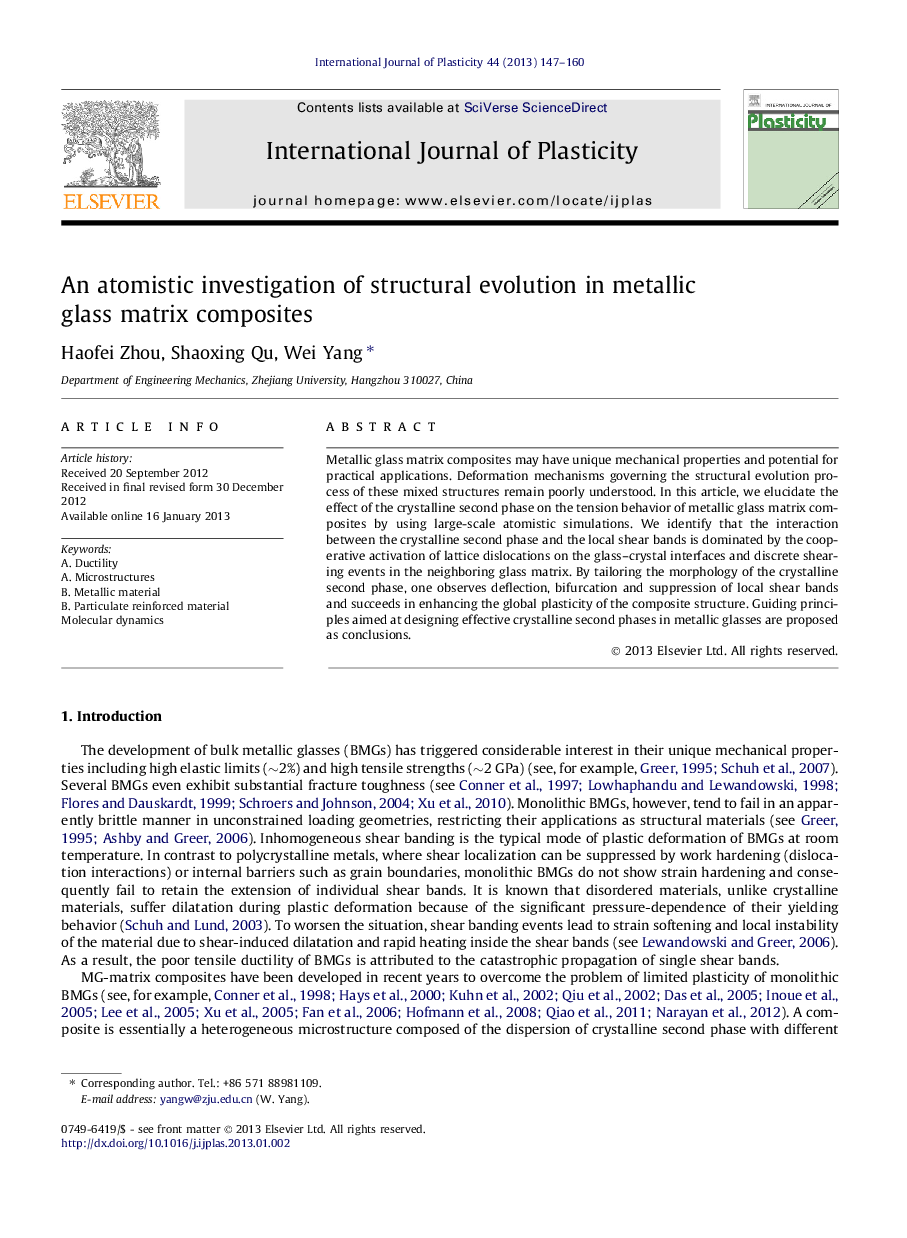| Article ID | Journal | Published Year | Pages | File Type |
|---|---|---|---|---|
| 786262 | International Journal of Plasticity | 2013 | 14 Pages |
Metallic glass matrix composites may have unique mechanical properties and potential for practical applications. Deformation mechanisms governing the structural evolution process of these mixed structures remain poorly understood. In this article, we elucidate the effect of the crystalline second phase on the tension behavior of metallic glass matrix composites by using large-scale atomistic simulations. We identify that the interaction between the crystalline second phase and the local shear bands is dominated by the cooperative activation of lattice dislocations on the glass–crystal interfaces and discrete shearing events in the neighboring glass matrix. By tailoring the morphology of the crystalline second phase, one observes deflection, bifurcation and suppression of local shear bands and succeeds in enhancing the global plasticity of the composite structure. Guiding principles aimed at designing effective crystalline second phases in metallic glasses are proposed as conclusions.
Graphical abstractFigure optionsDownload full-size imageDownload as PowerPoint slideHighlights► Cooperative activation of dislocations and STZs is observed near the interface. ► Slender second-phase crystals are better at suppressing shear banding. ► Larger volume fraction of second-phase crystals enhances global plasticity. ► Parallel nanocrystals are better at hindering local shear banding.
